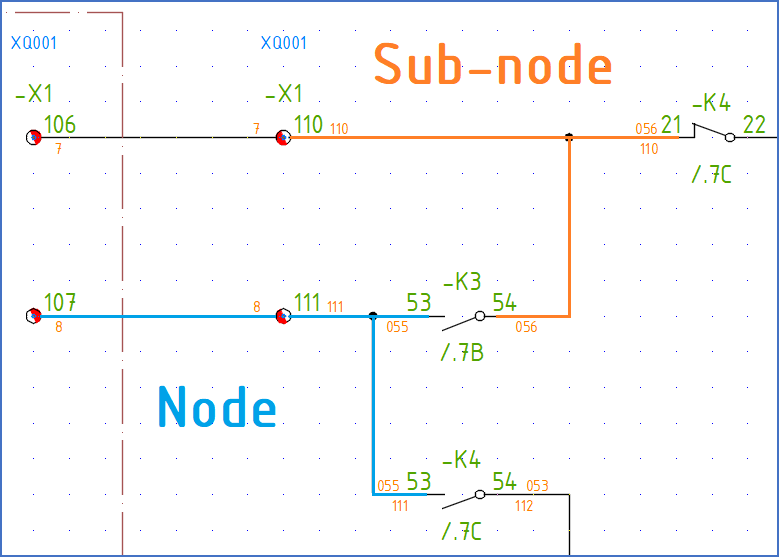|
<< Click to Display Table of Contents >> Nodes, sub-nodes, and wire-chains |
  
|
|
<< Click to Display Table of Contents >> Nodes, sub-nodes, and wire-chains |
  
|
When discussing wire-numbering, the terms “node”, and especially the variation “sub-node”, are used frequently. These terms are used in a way that is somewhat different in cadett ELSA from what might be common elsewhere.
In principle, a node is several connections (wires or cable cores) that are directly connected with each other so that they belong to the same electrical potential. A sub-node is almost the same thing. The main difference is how terminals and connectors are treated.
•On the other side of a terminal, you are still in the same node, but in a different sub-node.
•Terminals and connectors are treated as breaks for sub-nodes, but as connections for nodes.
Within a sub-node, all involved connection points are connected in a chain, a so-called "wire-chain". They are so to say “sewn” together, one after the other. First, the chain begins with an outgoing wire from the first connection point. This wire ends in connection point number 2 in the chain, where it therefore constitutes the ingoing wire. From there, the wire-chain continues with a new wire to connection point number 3, and so forth until all the connection points in the sub-node have been connected.
A consequence of what is said above, is that "sub-node" and "wire-chain" in principle are two words for the same thing.
Within a sub-node, there are never more than two wires connected to each connection point, one ingoing and one outgoing.
To symbols for conventional devices, you typically draw one line to each connection point in a circuit diagram. Normally, this means that you will have a maximum of two physical wires connected to each connection point. In most cases, this corresponds well with practical limitations.
Please refer to the figure below, which illustrates the terms "sub-node" and "node", where the treatment of terminals and connectors constitutes the main difference.

Figure 1334: An example of a "sub-node" is coloured orange here, while an example of a "node" is coloured light blue. Please note that a node goes through terminals while sub-nodes do not.